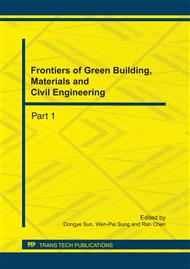p.5050
p.5054
p.5058
p.5062
p.5068
p.5074
p.5080
p.5084
p.5089
Analysis Coupling Vibration Characteristic of HVAS Droplets Based on Wave-Like Disturbance
Abstract:
Characteristics of vibration molten metal droplets are decisive importance to performance of high velocity arc sprayed coating, it is hardly that detected the dynamic action of liquid droplets owing to the limitation of experimental technique. The gas fluid-liquid droplet coupling vibration system of equations were established based on wave-like disturbance, the governing equation for fastest-growing wave number is derived. The agreement of predicted fastest-growing wave number and data of Bradley, which has the deviation within the±2% limits,indicares that the gas fluid-liquid droplet coupling vibration system of equations is effective. By the use of the coupling vibration system of equations, the effects of gas velocity, gas type and molten metal type to vibration characteristics of HVAS droplets is researched. The results show that selected N2 gas sprayed and increasing the gas velocity would be raise adhesive strength of the spraying coating, and provides theoretical evidence for choice of spraying materials and control in HVAS.
Info:
Periodical:
Pages:
5068-5073
Citation:
Online since:
July 2011
Authors:
Price:
Сopyright:
© 2011 Trans Tech Publications Ltd. All Rights Reserved
Share:
Citation:


